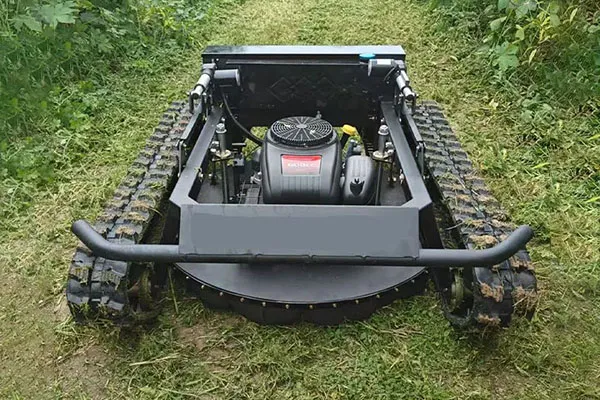Avoid your inquiry is delay response, please enter your WhatsApp/Skype along with the message, so we can contact you at the very first time.
We will reply you within 24 hours. If for urgent case, please add WhatsApp/WeChat: +8613791936882 ,. Or call +86-18678911083 directly.
Tired of spending your weekends pushing a heavy lawn mower?
A robot lawn mower can save you time and effort, maintaining your lawn efficiently while you relax or focus on other tasks.

Over the years, I’ve helped many customers—especially busy homeowners and landscapers—choose the right robot lawn mower. It’s a real game-changer, but with so many options on the market, it’s important to know what to look for. In this article, I’ll break down how robot mowers work, if they’re worth the investment, and whether they can handle tougher grass.
Uneven lawns can be tricky to manage with traditional mowers. But what about robot mowers?
Yes, robot mowers can work on uneven lawns, but their performance depends on the level of unevenness and the model you choose.

One of the first questions I get asked about robot mowers is whether they can handle uneven lawns. The answer is mostly yes, but there are a few things to consider.
Robot mowers are equipped with sensors that allow them to detect obstacles and adapt to slopes. Most models can handle slopes of up to 20–30%, depending on the mower’s power and traction. So, if your lawn has gentle unevenness or mild hills, a robot mower will work just fine.
Not all robot mowers are built equally. Some models are better equipped to handle rough or uneven terrain. Higher-end models, such as the Husqvarna Automower, come with advanced traction systems and stronger motors, allowing them to work on steeper slopes and uneven surfaces.
If your lawn is covered with deep holes, rocks, or uneven patches, some mowers might struggle. It’s important to smooth out areas where the mower could potentially get stuck. Additionally, make sure the grass isn’t too tall, as the mower may have trouble navigating if the ground is too rough.
| Feature | Best For |
|---|---|
| Slope Capacity | Models with high traction |
| Terrain Type | Mild to moderate uneven ground |
| Grass Height | Shorter grass for best results |
In general, robot mowers are capable of handling uneven lawns, but ensuring the right model and maintaining a manageable lawn surface will help improve their performance.
Are robot mowers really worth the investment?
Yes, robot lawn mowers are worth it if you value convenience, efficiency, and having a perfectly maintained lawn with minimal effort.
Over the years, I’ve spoken to a lot of customers about robot mowers. The most common feedback I hear is how much time they save, and how easy it is to maintain their lawns without breaking a sweat. Here’s why they are definitely worth the investment.
The biggest advantage is the time saved. With a robot mower, you can program it to work automatically at set times, and it will mow your lawn while you’re at work or out running errands. This is a massive convenience for busy homeowners and commercial property managers who don’t have time for traditional mowing.
Robot mowers are consistent. They follow a pattern that ensures even cutting, and since they mow frequently, your lawn stays neatly trimmed all the time. They also have sharp blades that cut grass cleanly, leading to healthier grass compared to the tearing of blades caused by traditional mowers.
Robot mowers are relatively low-maintenance. They are quieter than gas-powered mowers, so you can mow during the early morning or late evening without disturbing neighbors. They don’t require fuel and only need occasional cleaning and blade sharpening.
| Advantage | Why It’s Worth It |
|---|---|
| Time-Saving1 | Mows automatically on your schedule |
| Consistent Cuts | Regular mowing for healthier grass |
| Low Maintenance2 | Less upkeep and quiet operation |
| Energy Efficient | No fuel, low energy use |
For the amount of time saved and the consistent lawn quality, robot mowers are a smart investment for many people.
You may be wondering if a robot mower can handle longer grass or if you need to mow it first.
Yes, the Automower can cut long grass, but there are limitations. For optimal performance, it’s best to gradually reduce the grass height over multiple cycles.
I get asked this question quite often. People want to know if robot mowers3, especially models like the Husqvarna Automower, can cut grass that’s been left a little too long. Here’s what you should keep in mind:
Automowers and similar robot mowers can cut long grass, but they work best when the grass isn’t overgrown. If the grass is too long (over 6–8 inches), it’s best to trim it down manually first, then let the robot mower handle the rest.
Robot mowers are designed to mow frequently, and they do this by cutting only small portions of the grass at a time. If your lawn is overgrown, the mower may need to go over it several times before reaching the desired height. The mower will gradually trim down the grass over multiple cycles.
The Automower’s blades are sharp and efficient, but they are smaller than traditional mower blades. For really thick or long grass, it might take a few passes to get the best result.
| Feature | Effect on Long Grass |
|---|---|
| Cutting Frequency | Multiple cycles needed for overgrown grass |
| Blade Size | Smaller blades, gradual cutting required |
| Mower Speed | Slower for tall grass to avoid clogging |
If you’re dealing with a lawn that tends to get long quickly, it’s best to maintain it regularly with the robot mower. Over time, it will help you avoid the need for excessive trimming.
Robot lawn mowers are perfect for convenience, consistency, and cutting efficiency. While they can handle uneven lawns and long grass, regular maintenance and proper model selection will help you get the most out of your investment.